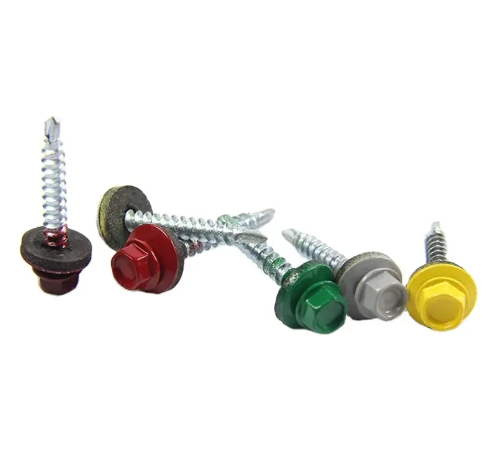self tapping screw standard sizes product
Understanding Self-Tapping Screw Standard Sizes
Self-tapping screws are an essential component in various industries, providing a reliable fastening solution for different materials. These screws do not require a pre-drilled hole, as they tap their own threads into the material during installation. This feature makes them highly efficient for applications where speed and convenience are crucial.
Self-tapping screws come in various standard sizes, which are determined by two main criteria the diameter and the length of the screw. The diameter is usually expressed in gauge size, and it ranges from 0 (the smallest) to 14 (larger sizes). The length of the screw is measured in inches or millimeters and can vary significantly depending on the specific application requirements.
The most common standard sizes for self-tapping screws include
1. Diameter Sizes - 4, 6, 8, 10, 12, and 14 - With each increase in gauge size, the screw’s diameter increases proportionally. For example, a 6 screw typically has a diameter of about 0.138 inches, while a 10 screw measures approximately 0.19 inches in diameter.
self tapping screw standard sizes product

2. Length Sizes - Length can vary from 1/4 inch to several inches. Common lengths include 1/2, 3/4, 1, 1-1/4, 1-1/2, 2, and 3. The selection of length should match the thickness of the materials being fastened together to ensure a secure hold without being excessively long.
3. Types of Heads - Self-tapping screws come with various head styles, such as pan, flat, and hex heads. The choice of head style can influence the screw's capability to fit into tight spaces or provide a specific aesthetic finish.
When selecting the appropriate size for a self-tapping screw, consider the material being used. For example, metal applications may require different screw designs than those used for wood or plastic. Additionally, the coating of the screw, such as zinc, chrome, or other finishes, can affect its corrosion resistance and suitability for outdoor applications.
Using the correct size of a self-tapping screw is vital to ensure optimal performance. Screws that are too short may not provide sufficient grip, while those that are excessively long can damage the materials being fastened. It’s also important to use the appropriate pilot hole size when necessary, to facilitate the screw’s insertion into harder materials.
In conclusion, understanding self-tapping screw standard sizes is crucial for anyone involved in construction, manufacturing, or DIY projects. By carefully selecting the right diameter, length, and head type, users can enhance the stability and durability of their assemblies while ensuring efficient installation. Whether for fastening metal, wood, or plastic, choosing the right self-tapping screw is an investment in quality and performance.
-
Top Choices for Plasterboard FixingNewsDec.26,2024
-
The Versatility of Specialty WashersNewsDec.26,2024
-
Secure Your ProjectsNewsDec.26,2024
-
Essential Screws for Chipboard Flooring ProjectsNewsDec.26,2024
-
Choosing the Right Drywall ScrewsNewsDec.26,2024
-
Black Phosphate Screws for Superior PerformanceNewsDec.26,2024
-
The Versatile Choice of Nylon Flat Washers for Your NeedsNewsDec.18,2024










